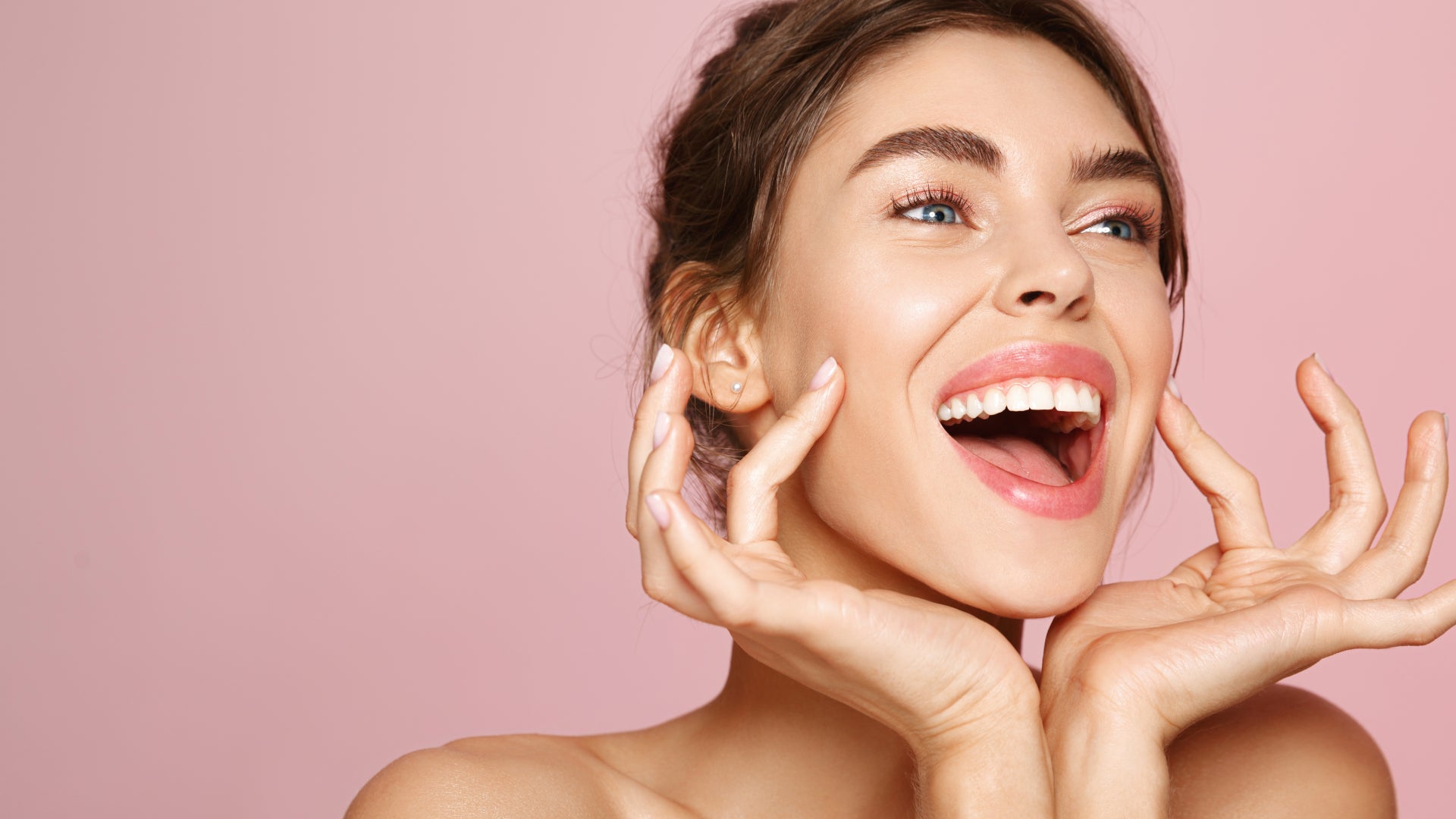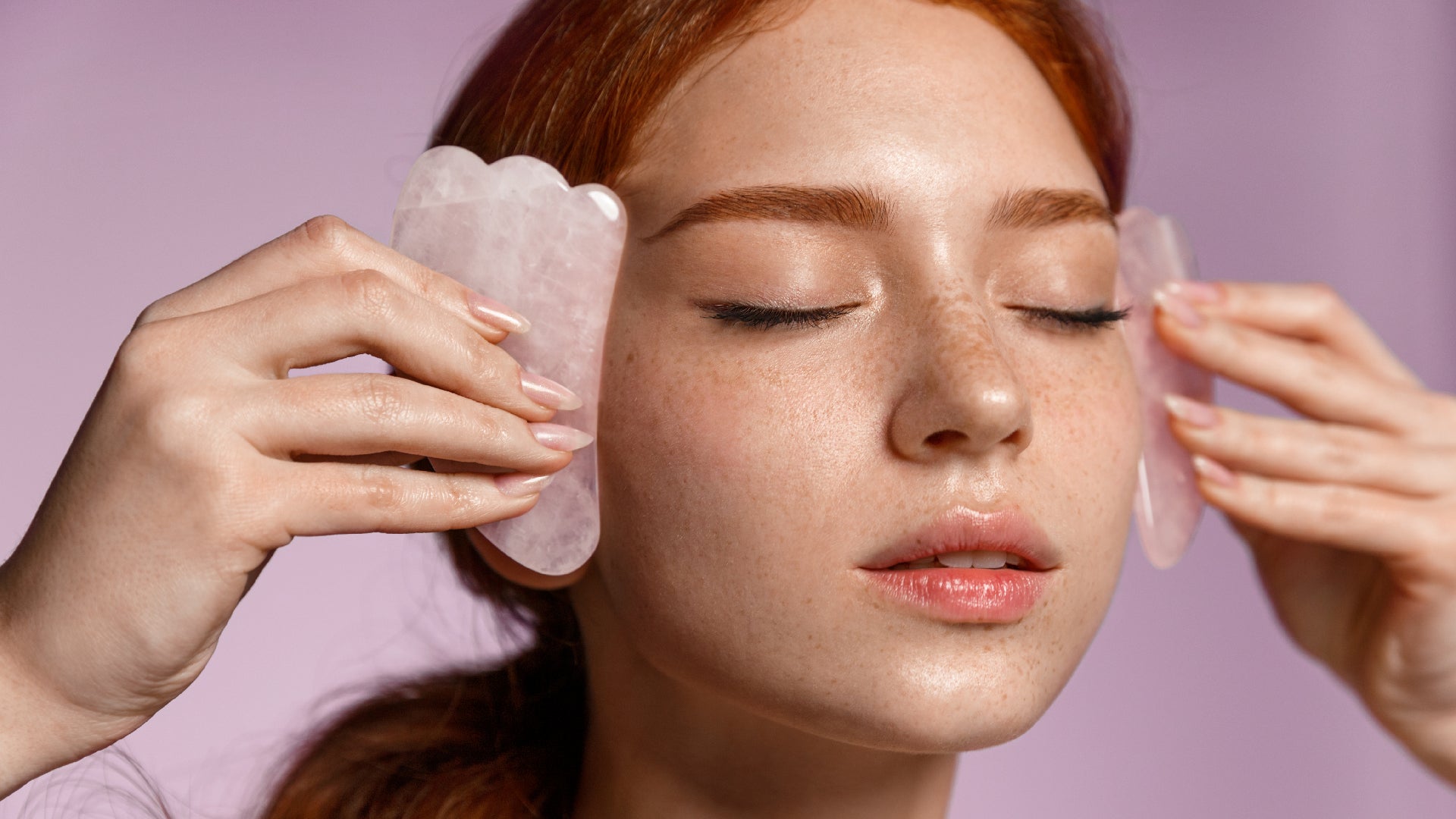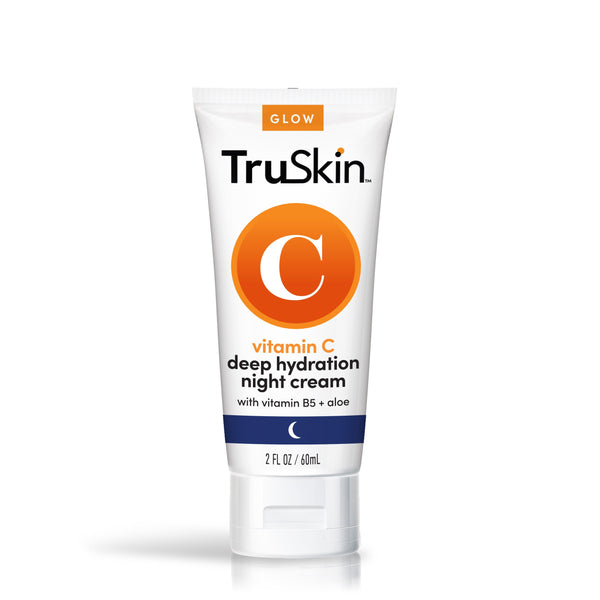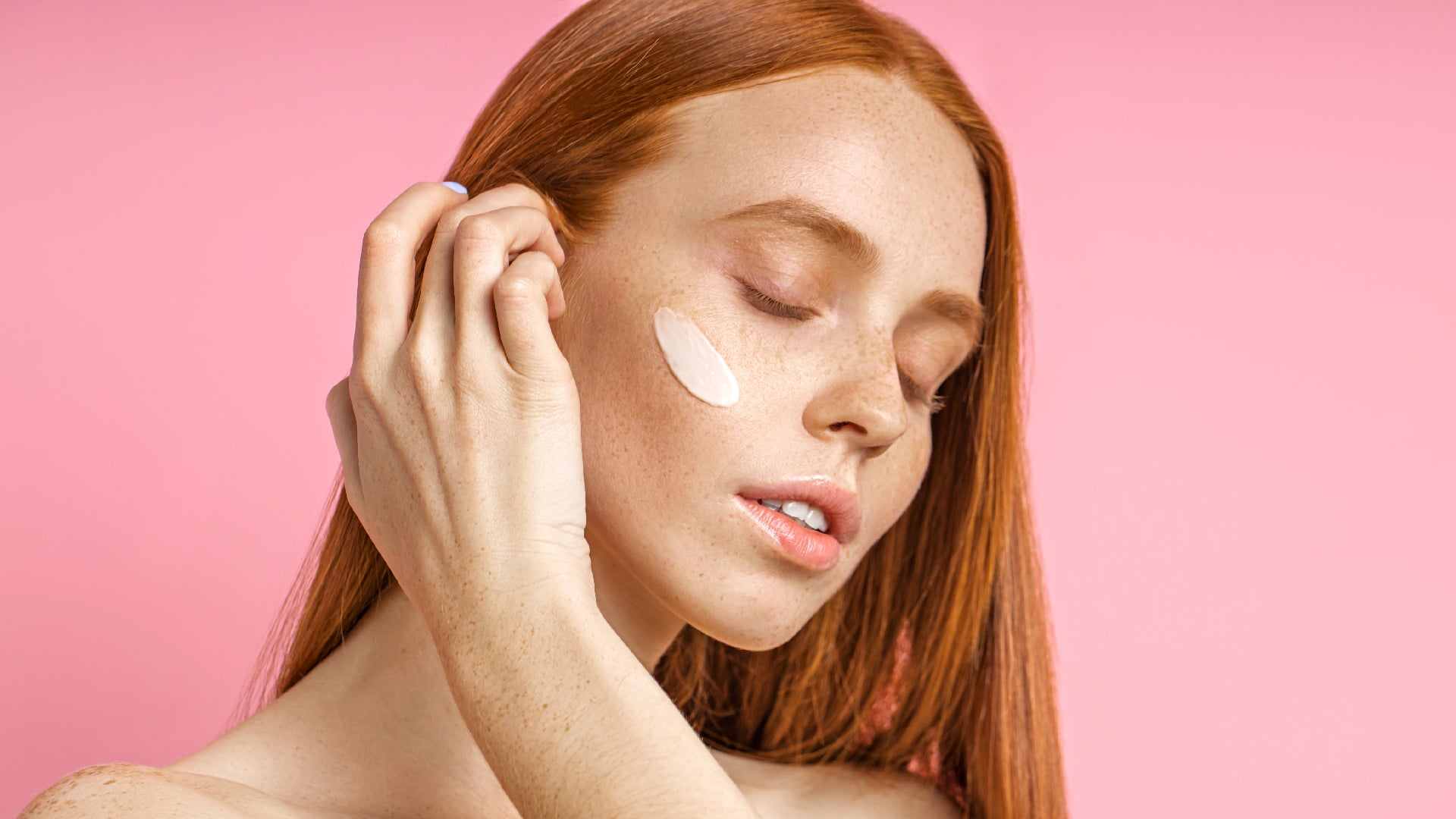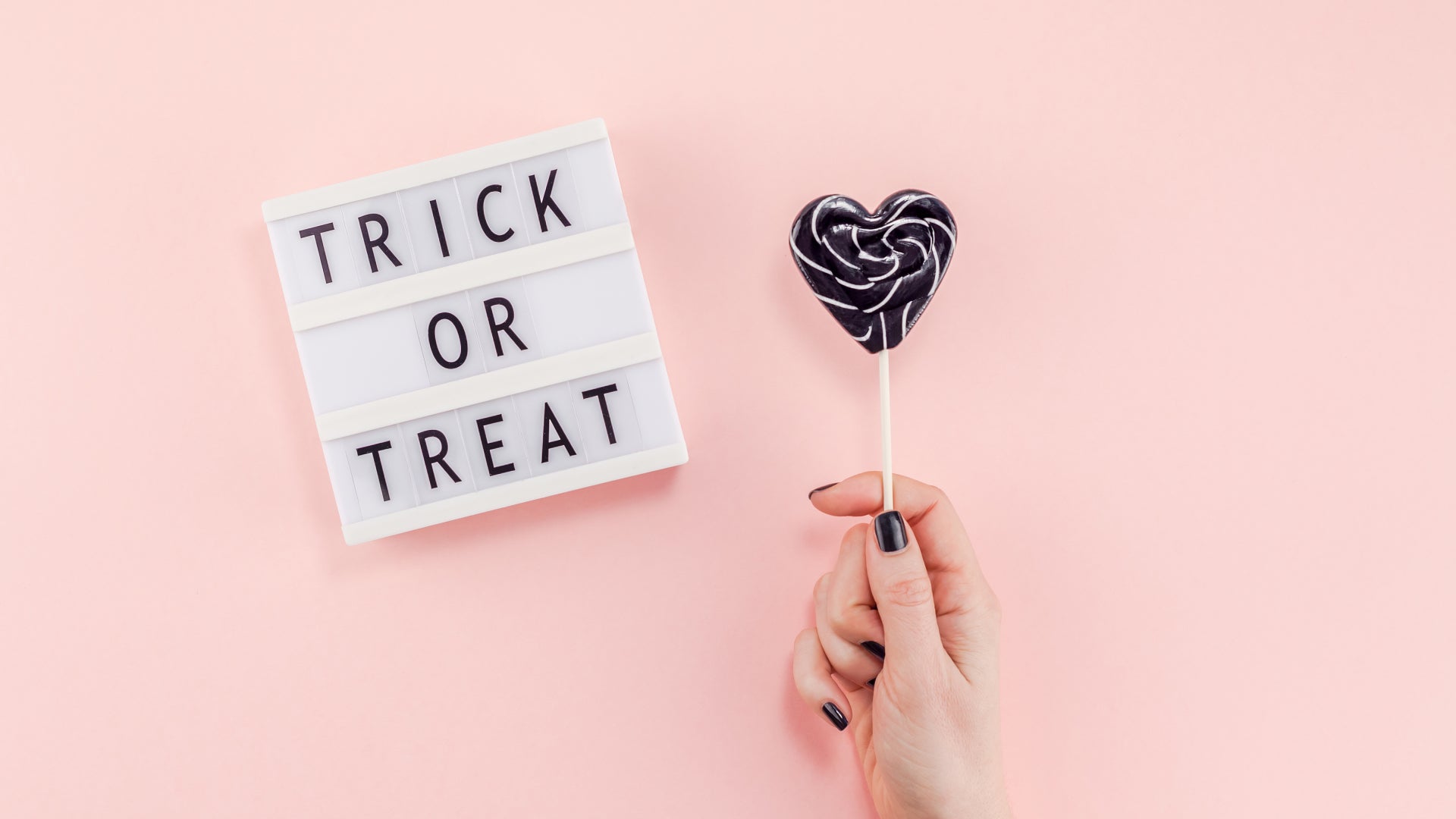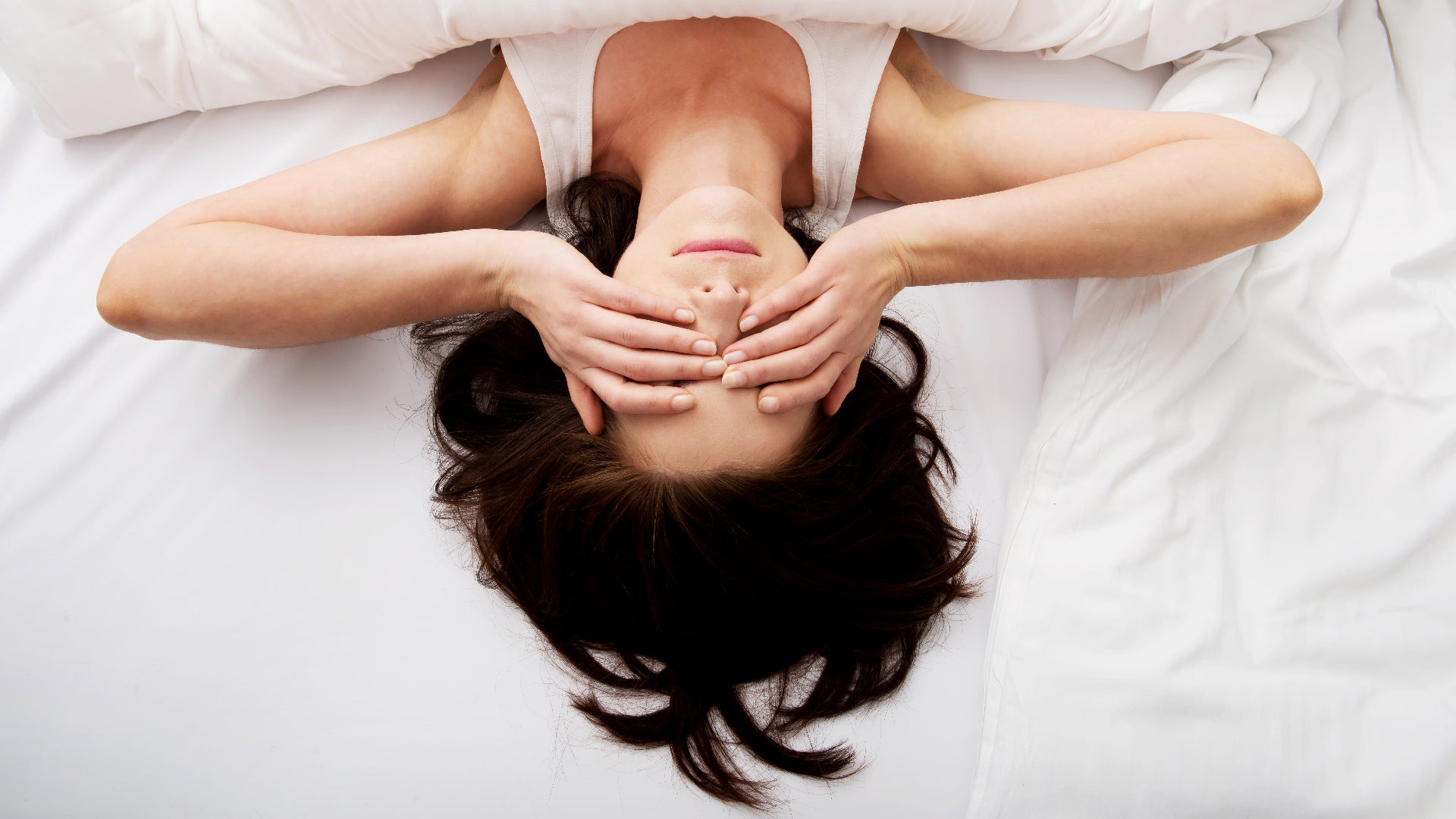
True Radical Honesty From Our Community
What To Do If You Hate Those Fine Lines Around Your Lips
Read MoreAdvice for all of your skin care needs
- all articles
- Acne
- Anti-Aging
- Collagen
- Combination Skin
- Company Announcements
- dry skin
- Exfoliation
- Eye Care
- Facial Redness
- Grooming
- Holidays
- Hyaluronic Acid
- Niacinamide
- Oily Skin
- Retinol
- Sensitive Skin
- Skincare
- Skincare Guide
- Skincare Ingredients
- Skincare Routine
- Skincare Tips
- Sun Protection
- Toner
- Vegan Skincare
- Vitamin C
- view all
- Acne
- Anti-Aging
- Collagen
- Combination Skin
- Company Announcements
- dry skin
- Exfoliation
- Eye Care
- Facial Redness
- Grooming
- Holidays
- Hyaluronic Acid
- Niacinamide
- Oily Skin
- Retinol
- Sensitive Skin
- Skincare
- Skincare Guide
- Skincare Ingredients
- Skincare Routine
- Skincare Tips
- Sun Protection
- Toner
- Vegan Skincare
- Vitamin C
-
Ramp up your skincare tools by knowing exactly which skincare products to use with them… and when.
These last few years have seen a massive rise in sales of at-home skincare tools and treatments that give you all the benefits of a spa-like facial without leaving the comfort of your own home. Figures, right? For the most part of 2020 and 2021 your home became your office, your school, your gym, even your hair salon (come on, fess up if you attempted a bad trim/root touch-up last year?). All this meant that popping to your favorite dermatologist or beauty therapist for an hour-long facial simply wasn’t an option. So, you started buying stuff to use at home that could help recreate the treatments you’d become accustomed to. And it turned out, most of you quite liked being your own beauty boss. Some of you also became pretty good at using your new skin tool BFF.
However, it’s not easy to transform yourself into a whizz at professional-style home treatments. So, if you’re yet to figure out how to use your gua sha or derma roller alongside your favorite skincare products, here’s our guide to getting it right.
The At-Home Skincare Tool: Cleansing Brush
What It Does: Sonic cleansing brushes and tools use powered bristles that vibrate and pulsate over the surface of your skin. Some use circular motions while others move back and forth, but whatever the technology, this repetitive, time-controlled movement offers similar results: to deeply cleanse your skin, break down dirt and oil, and keep your pores clean and clear. The massaging action has also been shown to help promote a toned, lifted and firmer-looking complexion.
How To Use: Cleansing brushes are extremely simple to use. Moisten your face with lukewarm water and apply cleanser all over your skin – you might need a little more than normal so don’t be shy. Next, grab your brush and work it over your face for around a minute. Anything more than light pressure will prevent the bristles from moving properly, however, so go easy. Rinse, dry and you’re done. Oh, and we don’t recommend using them more than once a day. Too much, people. Way too much.
The Best Skincare To Maximize Results: Of course, a great face wash is your go-to here and we think our Vitamin C Brightening Cleanser is the absolute bomb because it’s gentle enough for most skin types and formulated with vitamin C and other potent antioxidants for bright, radiant skin. Exfoliating scrubs should be avoided as these could over-stimulate your skin and cause irritation, dryness and sensitivities.
The At-Home Skincare Tool: Derma Roller
What It Does: Derma rollers are used in microneedling treatments. Microneedling works by using tiny, high-speed needles to produce tiny puncture wounds in your skin. This creates a controlled injury which triggers collagen and elastin production, nudging your skin to renew itself. By doing this, microneedling is said to help reduce acne scars, fine lines, wrinkles and even dark spots. But remember, at-home derma rollers are generally manufactured using shorter needles than the medical-grade ones used by the pros, so be patient with results.
How To Use: Shoving needles into your skin at home might sound like a crazy notion, but derma rollers can be extremely safe to use if you’re super careful and follow the instructions to the absolute letter. The first thing to remember is to make sure both your skin and derma roller are totally clean before your treatment, then mentally divide your face into four sections and gently work the roller over small areas within that section two or three times. Rinse your skin afterwards and gently pat it dry.
The Best Skincare To Maximize Results: Microneedling is a great way to help moisturizer and serum penetrate deeper into your skin. Which is good and bad news. First, the bad: microneedling can make your skin sensitive to potent, active ingredients like retinol and glycolic acid – especially if you’ve not used them before – so tread carefully with anything that could cause a reaction. The great news, however, is that microneedling will really ramp up the effects of some of your less sensitizing, more hydrating ingredients like hyaluronic acid, niacinamide, MSM and vitamin C. We recommend following a derma roller sesh with Niacinamide Facial Serum.
The At-Home Skincare Tool: Ice Globes
What They Do: Ice globes are a bit like jade rollers but, as their name suggests, they’re glass or metal wands that have balls on the ends which are designed to be kept in the fridge or freezer. Kind of like rubbing ice cubes all over your skin without the watery mess, ice globes are awesome for the eye area as their globe-like shape makes them easy to negotiate around the orbital bone. However, they’re great for soothing redness, minimizing inflammation, boosting circulation and reducing puffiness all over your face. Experts also believe they may help boost collagen to tighten and firm your skin. So, there’s that.
How To Use: These are best used in the morning to really wake up your skin and help reduce tired, puffy eyes and skin. Simply grab yours from the fridge or freezer and work it over cleansed, dry skin for 10 minutes or so. Use upwards movements to lift your skin and add radiance, or downwards strokes to encourage lymphatic drainage and reduce swelling, making sure you don’t press too hard as this could drag and damage your skin.
The Best Skincare To Maximize Results: Apply your favorite serum or eye cream before massaging to really super charge all those delicious, skin-loving ingredients. Try Vitamin C Facial Serum to help protect your skin throughout the day.
The At-Home Skincare Tool: LED Facial Mask
What It Does: Loved by the likes of Julia Roberts, Victoria Beckham and Olivia Munn, LED face masks might not be cheap, but, depending on the type of light involved, they’ve been proven to work on all manner of skin woes including fine lines, wrinkles, dark spots and even acne. They work by using waves of light (usually blue or red) to penetrate your skin and kick-start it to function more efficiently. Red light, for example, promotes collagen production so is great for anti-aging the skin, whereas blue light targets excess sebum to work on reducing acne breakouts.
How To Use: Again, they’re all different, but you basically cleanse, tone and moisturize as normal, then power up your mask, select the light you prefer (if there are options), pop the mask over your face and relax. What’s more, most masks switch off automatically after 15-20 minutes. What could be easier? Two or three times a week should be about right to give you decent results in just a few weeks.
The Best Skincare To Maximize Results: LED can cause your skin to feel a little dry to begin with so make sure you look after your skin’s barrier to prevent unnecessary water loss and help your skin stay hydrated and healthy. Vitamin C Deep Hydration Night Cream is a great shout to apply before bed as this will really enrich your skin with moisture. Perfect the night before (and after) using your mask.
The At-Home Skincare Tool: Facial Gua Sha
What It Does: Pronounced ‘gwah shah’, this East Asian therapy has been around for hundreds of years and uses a flat, smooth crystal like jade or rose quartz to scrape the skin and move energy (or chi) around the face or body. This form of massage is known to help remove a build-up of lymphatic fluids from the face and around your eyes. It also boosts circulation and relieves muscle tension.
How To Use: Unlike body gua sha therapy which is firm and can cause bruising, using it on your face requires a more gentle approach. Simply place the tool flat against your skin and use the different angles and curves of the tool to fit the contours of your face. Apply gentle pressure and use a combination of long and short strokes across the surface to stimulate lymphatic drainage and reduce puffiness. Start once a week and then build up to more frequent use as you get more into a routine.
The Best Skincare To Maximize Results: To get the most from gua sha, cleanse and tone your skin first, then apply a small amount of facial oil to reduce drag and maintain a smooth surface as you massage your skin. If you want to concentrate on puffy eyes, firstly: great idea. And secondly: apply Hyaluronic Acid Eye Cream first for awesome, eye-rejuvenating benefits.
Make The Most Of Your Skincare Tools With These TruSkin Favorites
read more -
Little known fact: what you eat can seriously impact your skin.
There will always be a place for chocolate lava cake and Flamin’ Hot Cheetos in our lives, but if you’re worried that your sweet tooth/savory snack addiction is ruining your skin, it might be time to make some changes to your diet. And the best way to get the job done without feeling like you’re completely torturing your tastebuds? Simply employ a few smart food swaps. And luckily for you, we’ve done the hard work right here…
Smart Swap #1: Sugar For Agave
As a nation, we consume about 17 teaspoons of sugar every day which is about five more than the maximum recommended amount. And sugar doesn’t just pile on the pounds. Studies show that a sugar-heavy diet produces what are known as advanced glycation end products (AGEs) in the skin. This happens through a process called glycation, which occurs when excessive amounts of sugar become too much for your natural insulin levels to handle. These sugars then end up attacking your vulnerable skin cells, latching onto collagen and elastin and causing them to become stiff and weak. The result? Harmful compounds called AGEs that cause dryness, exacerbate fine lines, deepen wrinkles and age you up lightning fast – as the name suggests!
Instead of using sugar to sweeten your food and drinks, try agave or monk fruit sweetener which both have lower glycemic index values, so they get absorbed more slowly into your bloodstream, causing less damage as they go. And don’t forget those devilish sodas, also. Soda is packed with sugar, often more than the entire daily recommendation, so switch them out for water wherever possible.
Smart Swap #2: Red Meat For Fish
Most red meats are high in saturated fats and cholesterol which can lead to inflammation in your body. And you all know what inflammation does to your skin. Cue irritation, redness, acne flare-ups and damage to your valuable collagen levels which can lead to premature aging in the form of lines, wrinkles, dark spots and dull skin.
Rather than pack your diet with red meat, choose wild fish like salmon which is low in cholesterol but high in good fats – namely omega-3 fatty acids. Omega-3s are great for the complexion as they help regulate sebum production, soothe irritation, improve healing and increase hydration. A major plus for your skin.
Smart Swap #3: Chips For Nuts
Anything fried is bad for your skin, and there’s a very simple reason for that. Just like sugar, fried food increases free radicals and AGEs in your skin. Fried potato chips, for example contain almost 900 AGEs per serving compared to baked chips which only contain around 150. Now, correct us if we’re wrong, but that feels like a pretty major difference to us. Frying foods also kills essential vitamins, minerals and nutrients which your skin need to remain healthy, glowing and youthful-looking.
Regular, store-bought chips are not only fried, but they’re covered in salt which is vital for your health, but when consumed in large amounts, is a devil on your skin’s barrier function, sucking all the moisture out of it and making your skin feel dry, dehydrated and sensitized. Salt also causes inflammation, weakens your collagen and exacerbates conditions like eczema and acne.
Word to the wise? Ditch the bumper bags of Kettle Chips and Nacho Cheese Doritos in favor of unsalted nuts like walnuts, almonds and cashews. These are not only salt-free but packed with antioxidants. Win-win.
Smart Swap #4: Refined Carbs For Low GI Carbs
Thought you were done with AGEs? Think again. Refined carbs like white bread, pasta and rice are high-glycemic foods which means that, just like sugar, they get turned into glucose by your body, causing a spike in your blood sugar levels and a serious amount of skin-wrecking AGEs. Dang.
Breads and grains are also high in gluten which can aggravate your skin and cause inflammation and breakouts if you have a gluten intolerance. So, there’s that.
Ditching bread and pizzas may sound like absolute hell but try to at least cut down on the white ones if you can bear it. Friendlier alternatives are wholemeal breads, brown rice and when it comes to pasta, try zoodles (zucchini noodles), spiralized carrots or eggplant lasagne. Delicious and way better for your skin.
Smart Swap #5: Cow’s Milk for Nut Milks
Dairy products are essential for the health of your entire body, but for lactose intolerant people, it can wreak skin havoc. When your body can’t digest a certain food group, you see, it starts to ferment and breed bacteria – terrible for your gut, just as bad for your skin. Dairy cows are also frequently treated with hormones which can throw yours off balance and trigger acne breakouts.
If you’re lactose intolerant and are having trouble with dairy, replace cow’s milk with organic milks made from nuts or seeds such as coconut, flaxseed, hazelnut or cashew.
5 Of The Most Skin-Friendly Food Swaps
read more -
Collagen is one of, if not the most important building blocks of your skin. But what’s the deal with collagen loss and can skincare really help put back what’s gone? Here’s everything we know…
If you’re here, you’re probably semi-interested in your skin and how it works. And if that’s the case you’ll know a little bit about collagen and the role it plays in the overall health of your skin. Hint: it’s a LOT.
But how much do you really know about collagen? Like, what happens as you age? And what collagen in skincare truthfully means?
Interested to up your collagen knowledge (ooh, try saying that three times in a row after a few pinots!)? Then read on for the full intel…
What Is Collagen?
Collagen is the most abundant protein in the whole of your body and it’s made up of a combination of amino acids. While there are many different types of collagen, there are only four main variants, and of these, just one (type I) accounts for a whopping 90 percent of your body’s collagen levels.
Collagen is found in the body’s connective tissues and it has a kind of dense, fiber-like structure which acts like ‘glue’ to make these tissues strong, supple and resilient. You’ll find collagen in your bones, muscles, teeth and blood, but it’s most prevalent in your skin where it’s produced just beneath the surface in the dermis.
How Does Aging Affect Collagen?
When you’re young, your skin is awash with lots of delicious collagen which keeps it soft, strong, plump and wrinkle-free. However, once you hit your 20s, you start to produce around 1-1.5 percent less collagen every year. This is what’s known as intrinsic aging and it’s what causes the inevitable thinning and weakening of your skin you literally have no control over.
Of course, there are plenty of other factors at play here, too. Your lifestyle, your diet, how much sleep you get and your levels of stress all work to deplete collagen in your skin. Then, there’s the environmental stuff like pollution and UV damage that cause collagen-damaging free radicals. All this you can control and it’s what’s known in the biz as extrinsic aging.
So, Can You Slow Down The Rate At Which Your Skin Loses Collagen?
Yes and no. Intrinsic aging is a done deal and unless you’ve invented some kind of Back To The Future style DeLorean, you can’t alter time. But you can control all the other factors. The sun is the biggest player and responsible for around 80 percent of extrinsic aging, so you must protect your skin from UV damage every day by applying an antioxidant like Vitamin C Facial Serum followed by sunscreen with broad-spectrum coverage.
Getting a great night’s sleep, not smoking and reducing emotional stress are also super important. And so is your diet. Sugar and refined carbs can really screw up collagen synthesis so try to avoid these. Instead, up your intake of antioxidant-rich fruit and veggies and ensure you get plenty of protein as this helps your body produce more quality collagen in order to maintain firmer, younger-looking skin.
Meat, poultry, seafood, dairy, beans and tofu are real BFFs for quality collagen production.
What’s The Deal With Collagen In Skincare?
Experts are divided as to whether applying skincare containing collagen really works. The issue is that collagen is a large, very complex molecule making it pretty hard to penetrate the skin when applied topically. Hydrolyzed collagen (which is collagen that’s been broken down into peptides) may absorb more easily, but the jury’s still out.
If you're not convinced, stick with skincare ingredients that work to increase your own rate of collagen production, rather than to apply topical, synthetic collagen. Ingredients like retinol, MSM and vitamin C have all been studied and proven to stimulate your skin’s natural collagen production and inhibit its breakdown. Retinol, in particular, has been used for decades and has an awesome track record when it comes to upping your collagen levels.
Try Retinol Facial Serum or Vitamin C Super Serum +. And of course, don’t forget that super important sun protection to reduce the formation of free radicals in your skin and consequently decrease your risk of collagen damage.
Finally, What About Collagen Drinks & Supplements?
There's not a huge amount of evidence to support whether collagen shots or supplements can realistically make your lines and wrinkles disappear. Some research papers point to them having definite potential, but other experts believe that by the time the collagen has been ingested, digested and made its way into your bloodstream its potency and quantity could be somewhat lacking.
Again, hydrolyzed collagen supplements seem to have potential as studies show these to be more easily absorbed by your body.
Our advice for maintaining quality collagen for as long as you possibly can? Go for a healthy diet, use daily sun protection and apply antioxidants and retinol on the reg.
The Truth About Collagen
read more -
Not that we’re dissing retinol. It’s just that it’s not the ONLY skincare ingredient out there worth a place in your daily regime…
Don’t get us wrong, retinol gives us all the feels and we’re mad about its cunning ability to improve everything from wrinkles and dark spots to acne and sagging skin. But it’s pretty potent stuff, so not everyone’s skin can get away with using it on the reg. Also, it’s not the be-all and end-all. In fact there are plenty of other trusted skincare ingredients that offer awesome anti-aging benefits for no-so-youthful-looking skin.
Of course, any brand promising you miracles like a ‘face lift in a bottle’ is lying to you – no matter what kind of clinically-proven wonder-potions are packed inside. But if you keep at it, and give skincare time to work, certain ingredients are guaranteed to offer real, skin-changing results.
Here are our top five…
1. Exfoliating Acids
According to the Mayo Clinic, exfoliating acids like AHAs (alpha hydroxy acids), BHAs (beta hydroxy acids) and PHAs (poly hydroxy acids) are among the most effective ingredients for reducing the visible signs of aging. Unlike manual exfoliators like scrubs, loofahs and face cloths that require some kind of physical movement to work, exfoliating acids dissolve the bonds between dead skin cells to encourage them to get a move on and fall away from the surface of your skin. This process accelerates cellular turnover and works to brighten, smooth and even out your entire complexion. It also helps prepare your skin to better absorb and reap the benefits of the rest of your skincare routine.
You’ll find exfoliating acids in various forms across anything from cleansers to serums, the most common of which are glycolic, lactic, gluconic and salicylic acids. We formulate salicylic acid into our Vitamin C Super Serum+ which is a great choice for aging skin. Always patch test first, then apply it to clean, dry skin before moisturizing.
2. Niacinamide
A form of vitamin B3, niacinamide is a very effective antioxidant that’s been gaining popularity as a skincare ingredient in recent years. And it’s about time, too.
Not a blog post goes by in which we don’t talk about antioxidants, yet here we go again –sorry, not sorry. Antioxidants are up there as some of the most important things to include in your skincare regime. Granted, cleanser, moisturizer and sunscreen are THE most important products for maintaining healthy skin, but if you care about defying lines, wrinkles and so on, antioxidants are everything. How so? Because they protect your skin from free radicals which are unstable oxygen molecules that wreak havoc on your skin when it’s exposed to things like UV radiation and environmental pollution.
Niacinamide is very well tolerated by the skin which makes it a great choice for sensitive skin. Research also shows that it increases the production of ceramides in the top layers of your skin which improves your barrier function, increases moisturization and helps reduce the appearance of fine lines and wrinkles. It also reduces inflammation, diminishes discoloration, fights breakouts and balances sebum. Is there anything niacinamide can’t do? For sure, but who needs a facial serum to walk the dog?
Try our awesome Niacinamide Facial Serum which blends this potent but skin-friendly antioxidant with healing vitamin E and hydrating hyaluronic acid.
3. MSM
Often overshadowed by the big guns, MSM is 100 percent worth a place in your skincare routine. And here’s why. Otherwise known as methylsulfonylmethane (agreed, a real mouthful), MSM is a sulfur compound which primarily contains sulfur, as well as small amounts of carbon, hydrogen and oxygen. Sulfur is extremely plentiful in the human body and found mainly in your skin and bones. It’s often known as the ‘healing mineral’ due to its ability to support healthy collagen synthesis, boost circulation, reduce inflammation and detoxify. Impressive stuff, right?
As a topical ingredient, MSM has been proven to not only increase collagen production, but to also reduce environmental damage by increasing your levels of glutathione. Glutathione is one of your body’s most important, naturally-occurring antioxidants, helping to fight oxidative stress caused by those devils called free radicals. We hate free radicals. You should hate free radicals, too.
You’ll find MSM in a bunch of your favorite TruSkin products including our Hyaluronic Eye Cream.
4. Peptides
Peptides can be tricky to get your head around, but simply put they’re chemical compounds made up of amino acids. Now, if you paid attention in 7th grade biology you’ll remember that amino acids combine to form proteins and are pretty much the building blocks of the human body, aiding in important functions like growth and repair. Well, while proteins are made up of long chains of amino acids, peptides are the little guys, made up of shorter chains.
In skincare, certain peptides act like little messengers to encourage your cells to produce more proteins – namely collagen, elastin and keratin – and simultaneously improve your skin’s texture and tone. They can work on fine lines, wrinkles, dark spots, even breakouts. But only if you choose the right ones…
One of the most effective peptides to look out for is Matrixyl 3000 which is thought to be able to almost double the amount of collagen your cells produce. Impressed? Much? Then you have to try our Peptide Eye Gel and Ocean Minerals Super Toner which both contain the mighty Matrixyl 3000 as well as plenty of other skin-loving and anti-aging ingredients.
5. Vitamin C
Another, dare we say it, powerful antioxidant, vitamin C is so good, we like to tout its abilities on an almost weekly basis! But it’s so much more than a free radical-fighting powerhouse. It’s literally ‘the’ ingredient for boosting radiance and diminishing dark spots.
So, how does that work? Well, studies have shown that it reduces the amount of melanin your skin produces by inhibiting tyrosinase (a catalyst for melanin production). By hampering melanin, vitamin C works hard to fade existing dark spots, help stop new ones from forming and give you a more glowy complexion. Oh, vitamin C also promotes cellular turnover and collagen production as a couple of extra bonuses.
Topical vitamin C takes on many forms, most commonly l-ascorbic acid and sodium ascorbyl phosphate (SAP). L-ascorbic acid is the pure form but it’s notoriously unstable meaning it breaks down easily, therefore becoming less effective. It can also be a little potent for sensitive skin so, instead, we use SAP across all of our C-products because it’s way gentler on the skin, still super effective and maintains its stability for much longer. SAP is the salt version of pure vitamin C which is why our infamous Vitamin C Facial Serum looks a little cloudy.
So, now you know!
Why Retinol Isn’t The Only Answer To Aging Skin
read more -
Halloween’s always a great excuse to scoff candy, but processed sugar can have dire effects on your skin…
Stuffing mealtimes with vitamins, minerals, antioxidants and good fats goes a long way to maintaining glowing, healthy skin. But treating your body like a temple is easier said than done when all the naughty stuff tastes so darn good.
Well, do you know what? A little of the bad stuff is not going to do that much damage in the long run. It’s all about everything in moderation, right? Ha, moderation! That’s all well and good throughout most of the year, but there are certain times when temptation is just too hard to resist. And Halloween is one of them.
From candy corn and Reese’s Peanut Butter Cups to ghoulishly decorated cupcakes and super sweet cocktails, there is literally no getting away from sugar at this time of year. Even when October 31 has passed, Thanksgiving is just around the corner, then the holidays and, well, you might as well right off the entire rest of the year because your willpower stands zero chance against all of that sweet stuff.
But here’s the thing, while a little sugar is fine, overloading your body with tons of processed sugar is hell on your skin and can lead to inflammation, premature aging, even pimples and blackheads. Not down with that? Then here’s everything you need to know about the disastrous effects excess sugar has on your poor complexion. And hopefully a little intel will make you think twice about living by the ‘one for them, one for me’ rule next time those trick or treaters come knocking on your door…
Why Sugar Is Bad News For Your Skin
Studies show that overloading your body with sugar accelerates the accumulation of advanced glycation end products (AGEs) through a process called glycation. Glycation is a reaction that occurs when excessive amounts of sugar become too much for your natural insulin levels to handle. It then attacks your skin cells, latching onto fats and important proteins like collagen and elastin, breaking them down and causing them to stiffen, weaken and performing poorly. The result? Harmful compounds called AGEs that kill your radiant, youthful complexion by causing dryness, exacerbating fine lines, deepening wrinkles and making your skin look kind of ‘meh.’
But that’s not all. Sugar is also an inflammatory, so not only does it play a huge part in the speed in which your skin ages, but it can also be a major trigger for acne, eczema, rosacea and psoriasis flare-ups. Especially if you like to overindulge on the reg.
How To Cut Down On Your Sugar Intake
Did you know, the average American consumes about 17 teaspoons of sugar every day – and who knows how much that spikes over Halloween and the holiday season? So, try to remember, Halloween candy should ideally be for the kids, not you! You probably wouldn’t give the likes of Skittles, M&Ms and Hershey’s Kisses a second look throughout the rest of the year, so just because they’re in the house now, this doesn’t mean you should scoff the lot.
A great tip is not to buy your trick or treat stash until the last minute – preferably the day of Halloween – then temptation won’t get in the way. And if you have leftovers you don’t know what to do with? Give them to a neighbor or take them to work so they’re well out of temptation’s reach.
When it comes to your regular, day-to-day eating habits, avoid adding extra sugar to your food and drinks, and limit packaged, processed foods that contain hidden sugars like corn syrup, fructose, molasses and invert sugar. Make small changes like replacing cookies and ice cream with fresh fruit and unsweetened yogurt, and swap sugary cereals for unsweetened oatmeal or granola. Simple tweaks like these won’t be too painful to stick to, but can make the world of difference to the look and feel of your skin.
5 Ways To Counteract The Negative Effects Of Sugar On Your Skin
Great skincare is also essential if you want to stop sugar from doing a real number on your complexion. Here are our top five ways to beat ‘sugar face.’
1. Load Up On Antioxidants
Pesky AGEs are a real killer on your body’s antioxidant system, deactivating your natural enzymes which work hard to fight against free radicals and all the damage they cause to your skin. To combat premature aging and limit oxidative stress, up your topical antioxidants. Vitamins A, C and E are fabulous antioxidants for your skin, as are niacinamide and hyaluronic acid. Not sure which to choose? Then you can’t go wrong with our fan-favorite, Vitamin C Serum For Face.
2. Up Your Intake Of Alpha-Lipoic Acid
Alpha-lipoic acid (ALA) is another antioxidant that helps protect your skin from free radical damage. It’s also an anti-inflammatory and, according to Diabetes Action, has been shown to help reduce levels of sugar and lipids in the blood by reducing oxidative stress and inflammation. ALA is found in spinach, broccoli, tomatoes, beets, carrots and red meat, but you can also find it in dietary supplements.
3. Get Plenty Of Zzzs
Your body does most of its damage limitation overnight while you’re catching valuable zzzs, so don’t underestimate the power of a good night’s sleep for reducing the aging effects of glycation. Studies show that the sleep hormone, melatonin can reduce damage caused by glycation by up to 50 percent. Sleep also helps curb inflammation and regulates your blood sugar levels to reduce sugar cravings throughout the day. Win win.
4. Use Anti-Inflammatory Skincare
Skincare that reduces redness and inflammation is perfect for anyone with a sweet tooth. And our favorite, anti-inflammatory go-to? MSM. Otherwise known as methylsulfonylmethane, MSM is a sulfur compound that helps increase your body’s natural production of glutathione, a super important antioxidant that works hard to boost collagen, quash environmental damage and fight inflammation. Try Vitamin C Super Serum+ to get your daily fill of MSM.
5. Reduce Your Levels Of Stress
Stress is bad news on so many levels, not least of all its effects on a post sugar high complexion. How so? Because, for one thing it causes spikes in cortisol, which accelerates glycation, increases inflammation, mucks up your collagen and interferes with healing. It can also affect sebum production, making dry skin drier and oily skin even oilier. Try to manage your stress by taking some time for yourself at least once a day. Read a book, go for a walk or take a bath – in fact, anything that helps clear your mind of the daily grind will go a long way to improving your skin – and, of course, your well being.
The Frightening Effects Of Sugar On Your Skin
read more -
From classic cucumber slices to the latest beauty tool sweeping Instagram, it’s time to take action against your unwanted eye baggage.
What is it with puffy eyes? Sure, they might not be your biggest skincare concern – frown lines and hormonal breakouts can fight for that crown – but waking up with bags under your eyes that would put the Kardashians’ weekend luggage to shame is not how we like to start the day.
Like many skin issues, there are a number of reasons you might be blighted by under eye bags. Think genes, lack of sleep, allergies and smoking. But one thing’s for sure, puffy eyes become much more common as you age. How so? Because skin becomes looser thanks to a lack of collagen, while supporting tissues and muscles around your eyes weaken, allowing fat and fluid to accumulate.
OK, so that’s the bad news. But it’s not all doom and bloom because there are countless ways you can quickly and simply improve bags under your eyes...
1. Invest In A Depuffing Eye Treatment
Skincare is a very personal thing and if there’s one product that consistently splits opinion, it’s eye cream. If you’re a bit of a cynic in this department, hear us out for a minute. Sure, regular moisturizer is just about passable for the skin around your eyes. Until it’s not. And the reasons are simple. The skin in this area is way thinner and more fragile than the skin on the rest of your face which makes it extremely susceptible to the visible signs of aging such as lines, wrinkles and sagging. It also has fewer sebaceous glands, so it can quickly feel dry and irritated unless it’s looked after. Then there are more specific eye issues like dark circles and bags – both of which don’t need to be addressed on the rest of your face.
This is why a specific eye treatment – one that’s been carefully created to deal with issues around your eyes – is so important.
When it comes to reducing eye bags, look for ingredients like caffeine, licorice, cucumber, hyaluronic acid and green tea which all help to hydrate the skin and reduce puffiness. Both Hyaluronic Acid Eye Cream and Peptide Eye Gel are also formulated with an ingredient cunningly called eyebright. This is a herbal extract that contains tannin to naturally tighten and refresh the skin while helping to reduce inflammation.
Apply your eye treatment to cleansed skin every morning and night and use your ring fingers to tap a small amount around both eyes. Using your ring fingers rather than your forefingers lessens the amount of pressure you put on your skin which reduces dragging. Meanwhile, the gentle tapping motion helps encourage lymphatic drainage.
2. Chill Out
One of the most effective and cheapest ways to instantly reduce puffiness is to apply something cold over your eyes. Cold temperatures make your blood vessels contract which reduces blood flow and immediately reduces swelling and inflammation. It’s simple science.
Of course, you could place two teaspoons (taken straight out of the refrigerator), a couple of cucumber slices or even some cold, used teabags over each eye for 10 minutes. These will all do the job nicely. But, if you love to embrace beauty tools, you might want to try out some facial ice globes.
Ice globes are a little bit like jade rollers but, as their name suggests, they have balls on the ends and are designed to be kept in your fridge or freezer. They can be used over your entire face to minimize inflammation and puffiness, but they’re particularly awesome for the eye area as their globe-like shape makes them easy to negotiate around the orbital bone. Use them in the morning to help waken up tired, puffy eyes, but be sure not to press too hard as this could drag and damage your skin. A gentle touch is all you need.
3. Be A Better Sleeper
Puffy eyes can be the result of many things, but more often than not poor or not enough sleep are the major culprits. The exact science behind this is kind of hazy but a lack of sleep causes the skin around your eyes to become dry and irritated, so there’s that. It also dilates the blood vessels which increases blood retention, and increases your levels of cortisol which makes your skin retain water.
The answer is simple. Get. More. Sleep. The American Sleep Association recommends between seven and nine hours. Not only that, but try to optimize any shut-eye you do get by sleeping on your back with your head slightly raised. Sleeping on your back helps reduce friction and any consequent inflammation and irritation to your skin from your pillowcase, while keeping your head elevated reduces fluid retention.
4. Embrace In A Little Gua Sha Therapy
You may have seen gua sha crystals popping up on your Insta feeds over the last year or so, but this ancient Chinese therapy has been around for hundreds of years. Using flat, smooth crystals like jade or rose quartz to massage your skin, gua sha is known to help remove a build-up of lymphatic fluids from the face.
To specifically work on puffy eyes, you basically hold your crystal almost flat against cleansed skin, then sweep it under your eye and out to your temple area. Repeat this three or four times, then do the same thing on the other eye and finally repeat the whole process above each eye, working just underneath your brow area. For even better results, always apply eye cream first.
5. Drink More Water, Eat Less Salt
While drinking water doesn’t directly hydrate your skin, if your body is dehydrated it will hold on to all the fluid it can, making your eye bags ten times worse. This means it’s super important to drink plenty of fluids. According to the National Academies of Sciences, Engineering and Medicine, a healthy adult female should consume around 2.7 liters of fluids every day, while men need around 3.7 liters. That may sound like a lot, but some of this will come from your food, with 80 percent being required from drinks like water, milk, juices and herbal teas. Still confused? Then go for eight glasses a day - it's much easier to remember!
One last thing before we go: try to reduce the amount of salt in your diet. Salt is just as dehydrating to your body as a lack of fluids because excess sodium causes it to retain water. This is bad news not only for puffy eyes, but for bloating as well, so decrease your salt intake, especially in the evenings. Fancy a cheeky packet of Cheetos before bed? Nope.
Full-Proof Remedies For Puffy Eyes
read more



